Once a mortal with a seemingly ordinary destiny, Perseus is a legendary figure whose transformation into a heroic constellation remains a captivating tale of heroism and adventure. In this article, we delve into the thrilling journey of Perseus, from his humble beginnings to his rise as a renowned hero. From his quest to slay the fearsome Medusa to his daring rescue of the beautiful Andromeda, Perseus’ transformation into a constellation is a testament to his courage, determination, and the divine aid he received. Join us as we unravel the epic story of Perseus and explore the mythological origins behind this celestial figure.
Contents
- Perseus: A Mortal with a Destiny
- The Quest for Medusa’s Head
- Rise to Heroism
- Transformation into a Constellation
- Conclusion
-
Frequently Asked Questions
- 1. How did Perseus discover his true identity?
- 2. What was the significance of the Oracle’s prophecy for Perseus?
- 3. How did the gods aid Perseus on his quest?
- 4. What challenges did Perseus face during his perilous journey?
- 5. How did Perseus slay Medusa?
- 6. Who was Andromeda and how did Perseus rescue her?
- 7. What other heroic feats did Perseus accomplish?
- 8. How did Perseus transform into a constellation?
- 9. What is the symbolism behind Perseus’ transformation into a constellation?
- 10. How does Perseus’ story connect to other mythological tales?
- References
-
Frequently Asked Questions
- How did Perseus become a constellation?
- What is the story behind Perseus’ transformation?
- What was the prophecy that guided Perseus’ quest?
- How did the gods aid Perseus in his quest?
- What were the challenges Perseus faced on his journey?
- What was the significance of Medusa’s head in Perseus’ heroism?
- Who did Perseus rescue and why?
- Apart from slaying Medusa and rescuing Andromeda, what other heroic feats did Perseus achieve?
- What led to the immortalization of Perseus as a constellation?
- What can we learn from the transformation of Perseus?
- References
- Read More
Perseus: A Mortal with a Destiny
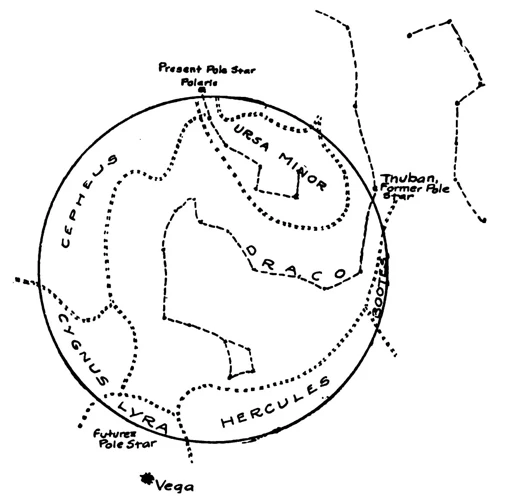
In Greek mythology, Perseus was born to Danaë, a mortal woman, and Zeus, the king of the gods. His birth came after a prophecy foretold that Danaë’s son would one day kill her own father, King Acrisius. Fearing this fate, King Acrisius cast Perseus and his mother into the sea inside a wooden chest. Miraculously, they survived and drifted to the island of Seriphos. Raised by the king of Seriphos, Perseus grew up unaware of his true identity and destiny. As he reached adulthood, a chain of events was set into motion that would reveal Perseus’ extraordinary powers and heroic potential. The Oracle’s prophecy would guide him on a perilous journey, where he would receive the aid of the gods to accomplish seemingly impossible tasks. The transformation of Perseus from an ordinary mortal into a legendary hero was marked by his courage, determination, and the unwavering belief in his own destiny.(source)
The Quest for Medusa’s Head
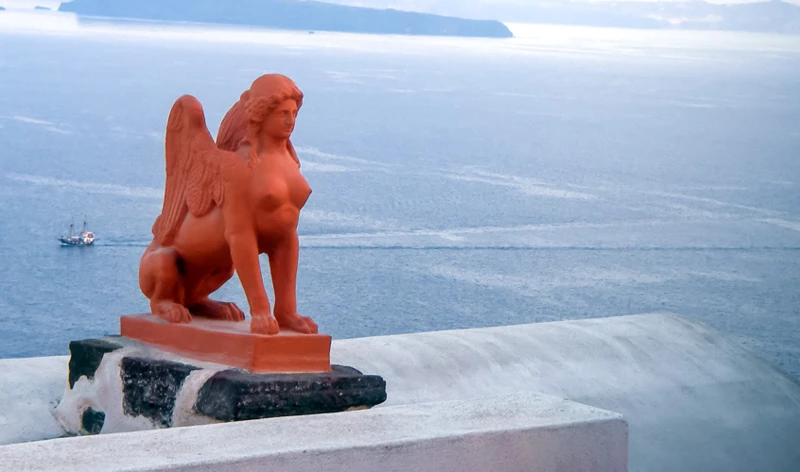
Perseus’ journey truly began when he was tasked with the quest to obtain the head of the monstrous Gorgon, Medusa. The Oracle’s prophecy revealed that only a truly brave and skilled hero would be capable of such a feat. Fortified by the divine aid of Hermes, who gifted him with winged sandals, and Athena, who provided him with a polished shield, Perseus set off on his perilous quest. The Medusa was a terrifying creature with snakes for hair that could turn anyone who looked at her into stone. Perseus utilized his quick wit, cunning, and the aid of his divine gifts to outsmart the dreadful Gorgon. Reflecting her own image in his shield, he was able to approach Medusa without looking directly at her. With one swift motion, using the sword provided by Hermes, he decapitated her. This triumphant victory marked a defining moment in Perseus’ transformation, solidifying his place as a true hero and setting the stage for his future adventures.(source)
The Oracle’s Prophecy
The Oracle’s prophecy played a crucial role in shaping Perseus’ destiny. According to the prophecy, it was foretold that Perseus would bring about the demise of King Acrisius, his own grandfather. Upon learning about this prophecy, King Acrisius feared the fulfillment of the oracle’s words and took preventative measures to avoid his own downfall. However, despite his efforts, fate cannot be easily thwarted. Zodiac sign compatibility has always been a subject of interest and interpretation in various mythologies, and Perseus’ task of slaying the monstrous Gorgon, Medusa, was a direct result of the oracle’s prophecy. It was revealed that the only way to fulfill his destiny and triumph over adversity was to embark on a perilous quest to obtain Medusa’s head. The oracle’s prophecy propelled Perseus into the heart of danger, shaping his path towards greatness and ultimately leading him to his transformation into a heroic constellation.
The Aid of the Gods
The aid of the gods played a crucial role in Perseus’ heroic journey. Zeus, Perseus’ divine father, bestowed upon him a pair of winged sandals, which allowed him to fly swiftly through the air. Hermes, the messenger of the gods, provided Perseus with a magical sword that could slice through any material with ease. Athena, the goddess of wisdom, gifted him with a polished shield that acted as both a mirror and a defensive weapon. These divine artifacts empowered Perseus to face the challenges that awaited him, particularly in his quest to defeat Medusa. Additionally, Hermes and Athena provided him with guidance and knowledge, enabling him to navigate treacherous terrains and successfully outsmart his adversaries. The aid of the gods not only equipped Perseus with the necessary tools and skills but also gave him the confidence and support to overcome seemingly insurmountable obstacles. Their intervention elevated Perseus from a mere mortal to a legendary hero, showcasing the intertwined nature of mortals and deities in Greek mythology.
Perseus’ Perilous Journey
With the prophecy from the Oracle hanging over his head, Perseus embarked on a perilous journey that would test his strength, wit, and determination. His first major challenge was to slay the monstrous Gorgon, Medusa, whose gaze could turn any living being into stone. Equipped with a shiny shield from the goddess Athena, winged sandals from the god Hermes, and a magical sword from the god Hephaestus, Perseus ventured into the treacherous lair of Medusa. Guided by Hermes, he managed to evade the other Gorgons and used his shield’s reflection to approach Medusa without making eye contact. Then, with a single swift motion, Perseus beheaded Medusa, securing her head in a bag for his future use. This daring feat showcased Perseus’ bravery and resourcefulness, and it marked a crucial step in his transformation into a legendary hero. However, his journey was far from over, as he still had to face a series of dangers and confrontations that would shape his heroic destiny.
Rise to Heroism
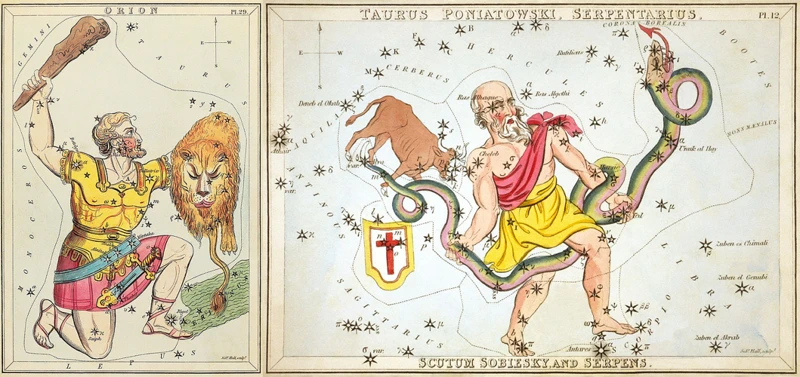
Perseus’ rise to heroism began with his most famous feat: the slaying of the monstrous Medusa. Armed with a reflective shield from Athena, a pair of winged sandals from Hermes, and a sword from the god of the underworld, Hades, Perseus embarked on a treacherous journey to fulfill his mission. Medusa, with her serpentine hair and deadly gaze that turned anyone who looked into her eyes to stone, posed a formidable challenge. With his wit and strategic prowess, Perseus managed to decapitate Medusa, using the reflection in his shield to avoid meeting her gaze directly. This heroic act proved his strength and resourcefulness, solidifying his status as a legendary hero. Additionally, Perseus’ rescue of the beautiful princess Andromeda from the grip of a sea monster showcased his bravery and selflessness. These and other heroic feats further elevated Perseus’ status and secured his place among the pantheon of renowned heroes(source).
The Slaying of Medusa
The slaying of Medusa is one of the most iconic and daring feats in Perseus’ heroic journey. Medusa, a monstrous Gorgon with snakes for hair, had the power to turn anyone who gazed at her into stone. Armed with gifts from the gods, including a polished shield from Athena and winged sandals from Hermes, Perseus embarked on his quest to slay the fearsome creature. To avoid looking directly into Medusa’s eyes, which would turn him to stone, Perseus cunningly used the reflection in his polished shield to guide his strikes. With a swift and calculated attack, he decapitated Medusa while avoiding her deadly gaze. The very sight of her severed head was enough to petrify anyone who laid eyes on it. Perseus, however, cleverly used Medusa’s head as a powerful weapon, turning his enemies to stone in the process. This triumph over the monstrous Gorgon not only showcased Perseus’ exceptional courage and resourcefulness, but it solidified his growing reputation as a legendary hero. The slaying of Medusa would forever be remembered as one of Perseus’ greatest accomplishments.(source)
Rescue of Andromeda
The daring rescue of Andromeda is one of the most iconic feats performed by Perseus, solidifying his status as a legendary hero. Andromeda, the daughter of King Cepheus and Queen Cassiopeia, was bound to a rock as a sacrifice to appease the wrath of a sea monster sent by Poseidon. Hearing of her plight, Perseus gallantly agreed to save her. Armed with Medusa’s head, which had the power to turn anything it gazed upon to stone, Perseus set off to confront the monstrous creature. As he arrived at the scene, the sea monster emerged from the depths, ready to strike. Undeterred, Perseus lifted Medusa’s head, and the mere sight of it turned the sea monster into stone, saving Andromeda from certain doom. This courageous act not only demonstrated Perseus’ bravery but also showcased the extraordinary powers he possessed. Andromeda, grateful for her rescue, became Perseus’ wife, and together they embarked on further adventures, cementing their place in ancient Greek mythology as a legendary couple. The rescue of Andromeda stands as a testament to Perseus’ heroism and his ability to overcome impossible odds in the face of danger and adversity.
Other Heroic Feats
Throughout his journey, Perseus showcased his heroic abilities by accomplishing numerous other feats. One such feat was his encounter with the Graeae, three aging sisters who shared a single eye and tooth among them. Perseus cleverly seized the eye and tooth and negotiated with the sisters to obtain valuable information. This resourcefulness allowed him to navigate through various challenges. Additionally, Perseus crossed paths with Atlas, a titan condemned to hold up the heavens. Using the severed head of Medusa, Perseus turned Atlas into stone, releasing him from his burden. This act demonstrated Perseus’ strength and resourcefulness in overcoming seemingly insurmountable obstacles. Perseus saved the kingdom of Argos from a sea monster sent by Poseidon. With his courage and wit, he successfully rescued the princess, Andromeda, whom he later married. These heroic feats solidified Perseus’ reputation as a true hero, revered and celebrated throughout the ancient world.
Transformation into a Constellation
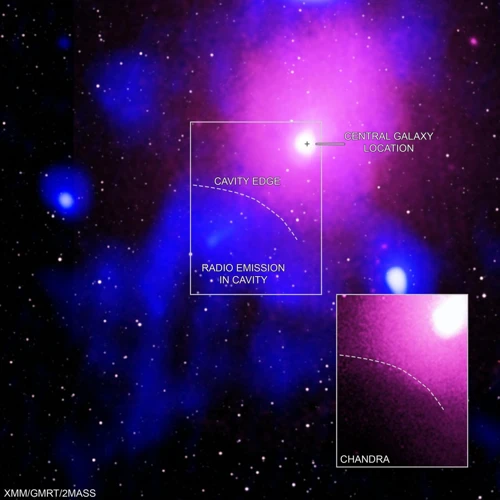
Perseus’ transformation into a constellation is a lasting tribute to his heroic feats and divine lineage. According to Greek mythology, after Perseus completed his remarkable quests and achieved great fame, he was eventually placed among the stars by the gods. As a constellation, Perseus can be found in the northern sky, near the constellations of Cassiopeia and Andromeda. Its celestial position is marked by several prominent stars, including Algol (β Persei), which represents the terrifying head of Medusa, and Mirfak (α Persei), symbolizing Perseus’ left shoulder. The constellation depicts Perseus holding the head of Medusa in his hand, ready to turn any onlooker to stone. This celestial portrayal immortalizes Perseus’ extraordinary deeds and serves as a reminder of the power that mortals can attain when faced with incredible challenges. The transformation of Perseus into a constellation not only solidifies his place in mythology, but also inspires stargazers to marvel at the fascinating interplay between the celestial and terrestrial realms.
Conclusion
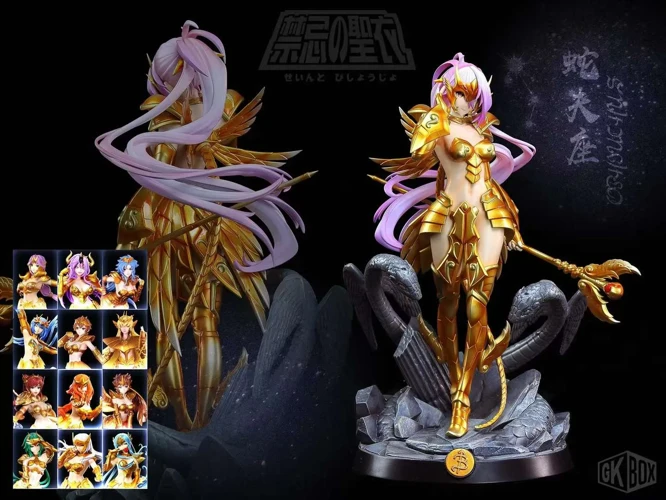
In conclusion, the transformation of Perseus from a mortal to a heroic constellation is a captivating tale that showcases the triumph of courage and destiny. Perseus’s journey, from his humble beginnings to his epic feats, exemplifies the power of determination and the help one can receive when undertaking seemingly impossible tasks. Through his quest to slay Medusa, the rescue of Andromeda, and his many other heroic feats, Perseus was able to ascend to the status of a revered hero, immortalized in the night sky as a constellation. His story serves as an inspiration, reminding us that even in the face of great adversity, we have the potential to rise above and achieve greatness. The tale of Perseus not only entertains us with its thrilling adventures, but it also teaches us valuable lessons about bravery, perseverance, and the transformative power of embracing one’s destiny. As we gaze upon the constellation named after him, let us remember Perseus, a mortal who defied his limitations and became a celestial symbol of heroism.(source)
Frequently Asked Questions

1. How did Perseus discover his true identity?
Perseus discovered his true identity through a series of events and divine interventions. One of the pivotal moments was when he learned about the prophecy that foretold he would kill his own grandfather. This revelation led him on a quest for self-discovery and eventually led to the fulfillment of his heroic destiny.
2. What was the significance of the Oracle’s prophecy for Perseus?
The Oracle’s prophecy was significant as it foretold Perseus’ destiny to kill his own grandfather. This prophecy set the wheels in motion for Perseus to embark on a dangerous journey and become the legendary hero he was meant to be.
3. How did the gods aid Perseus on his quest?
The gods played a crucial role in aiding Perseus on his quest. Athena, the goddess of wisdom, provided him with a polished shield for protection. Hermes, the messenger of the gods, lent him his winged sandals for swift travel. Additionally, he received a helmet of invisibility from Hades, the god of the underworld.
4. What challenges did Perseus face during his perilous journey?
Perseus faced numerous challenges during his perilous journey. He encountered and had to overcome the monstrous Gorgons, including the infamous Medusa, whose gaze could turn any living being to stone. He also had to navigate treacherous obstacles and face various foes determined to thwart his mission.
5. How did Perseus slay Medusa?
Perseus slayed Medusa by using his polished shield as a reflection to avoid looking directly into her eyes. With the divine aid of Hermes’ wings and Athena’s guidance, he carefully approached Medusa and beheaded her using the legendary sword gifted to him by Zeus.
6. Who was Andromeda and how did Perseus rescue her?
Andromeda was a princess who was chained to a rock as a sacrifice to a sea monster. Perseus, upon seeing her, fell in love instantly and vowed to save her. With Medusa’s severed head, he turned the sea monster to stone, thus rescuing Andromeda and winning her hand in marriage.
7. What other heroic feats did Perseus accomplish?
In addition to slaying Medusa and rescuing Andromeda, Perseus accomplished several other heroic feats. He saved his mother Danaë from a forced marriage by turning the king into stone with Medusa’s head. He also participated in the Calydonian boar hunt and played a role in the story of the Argonauts.
8. How did Perseus transform into a constellation?
After his death, Perseus was immortalized as a constellation by the gods. Zeus placed him among the stars as a tribute to his bravery and heroism. To this day, the constellation of Perseus can be seen in the night sky, forever reminding us of his legendary status.
9. What is the symbolism behind Perseus’ transformation into a constellation?
Perseus’ transformation into a constellation represents the eternal recognition of his heroic deeds. It serves as a reminder of the power of bravery, determination, and the triumph of good over evil. The celestial depiction of Perseus also signifies the lasting impact and legacy of heroes in our collective consciousness.
10. How does Perseus’ story connect to other mythological tales?
Perseus’ story intersects with various other mythological tales, as many Greek myths are interconnected. For instance, his participation in the story of the Argonauts connects him to the epic quest for the Golden Fleece. His association with the gods, especially Zeus and Athena, underscores the intricate web of relationships among deities and mortals in Greek mythology.
References
Frequently Asked Questions

How did Perseus become a constellation?
Perseus became a constellation as a result of his heroic deeds and his significant role in Greek mythology. After his death, Zeus honored him by placing his image among the stars, immortalizing him in the night sky.
What is the story behind Perseus’ transformation?
Perseus’ transformation involves his journey from being a mortal hero to being immortalized as a constellation in the sky. This transformation is a testament to his bravery and heroism.
What was the prophecy that guided Perseus’ quest?
The prophecy foretold that Perseus would slay the Gorgon Medusa, whose gaze turned people into stone. This prophecy set Perseus on his path to become a hero and earn his place among the constellations.
How did the gods aid Perseus in his quest?
The gods played a crucial role in aiding Perseus. Hermes gifted him with winged sandals, while Athena provided him with a mirrored shield. These divine gifts helped him navigate the dangers he encountered in his quest.
What were the challenges Perseus faced on his journey?
Perseus faced numerous challenges on his perilous journey. These included the dangers of encountering various monsters, navigating treacherous terrain, and overcoming his own doubts and fears.
What was the significance of Medusa’s head in Perseus’ heroism?
Medusa’s head held great power, as anyone who looked directly into her eyes would be turned to stone. Perseus’ ability to slay Medusa and use her severed head as a weapon showcased his heroism and resourcefulness.
Who did Perseus rescue and why?
Perseus rescued Andromeda, a princess who was being sacrificed to a sea monster. He did so out of compassion and a sense of justice, demonstrating his selflessness and heroic nature.
Apart from slaying Medusa and rescuing Andromeda, what other heroic feats did Perseus achieve?
Perseus accomplished various other heroic feats during his lifetime. These included saving his mother from an unwanted marriage, winning athletic contests, and participating in other mythical adventures.
What led to the immortalization of Perseus as a constellation?
Perseus’ immortalization as a constellation was a result of his exceptional bravery, courage, and accomplishments. He became a symbol of heroism and was permanently memorialized in the night sky.
What can we learn from the transformation of Perseus?
The transformation of Perseus teaches us the power of determination and the ability to overcome obstacles. It reminds us that even mere mortals can rise to become heroes, leaving a lasting impact on the world.







